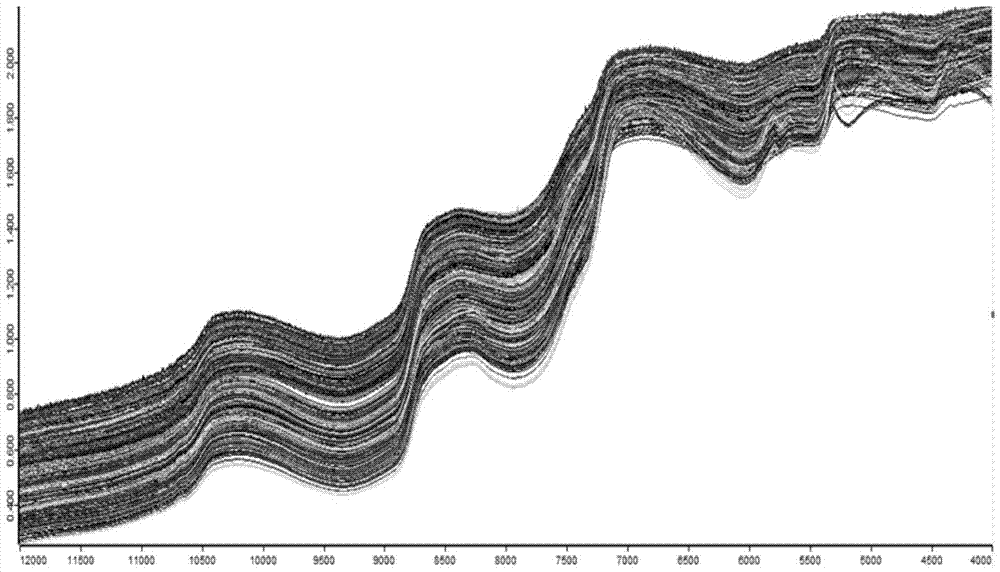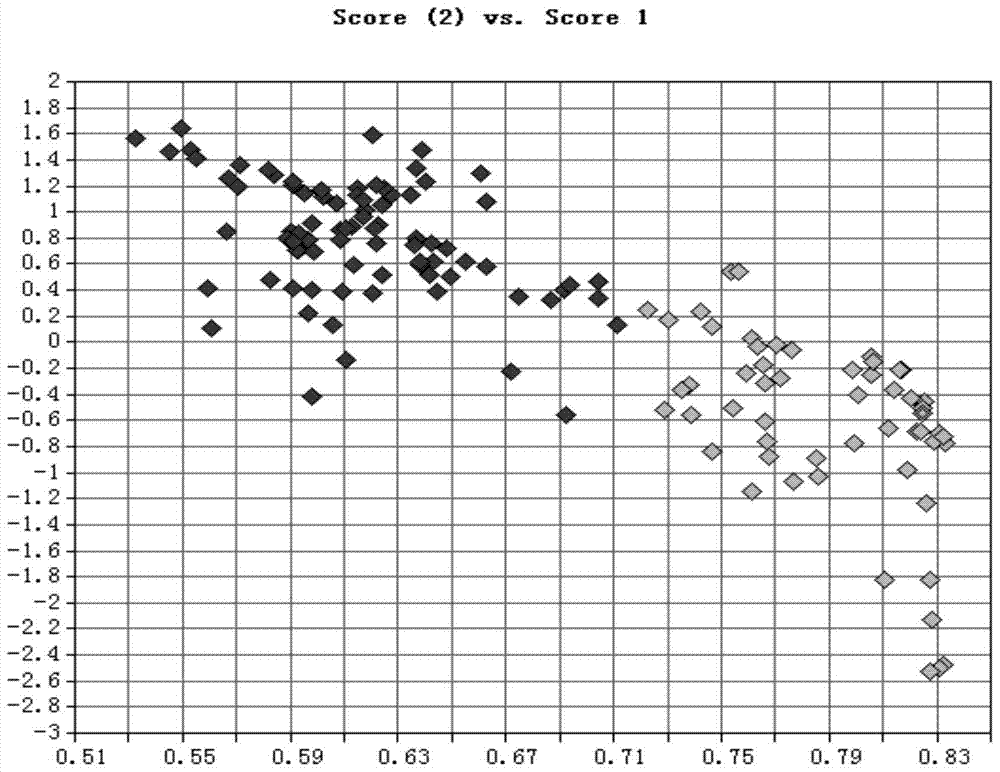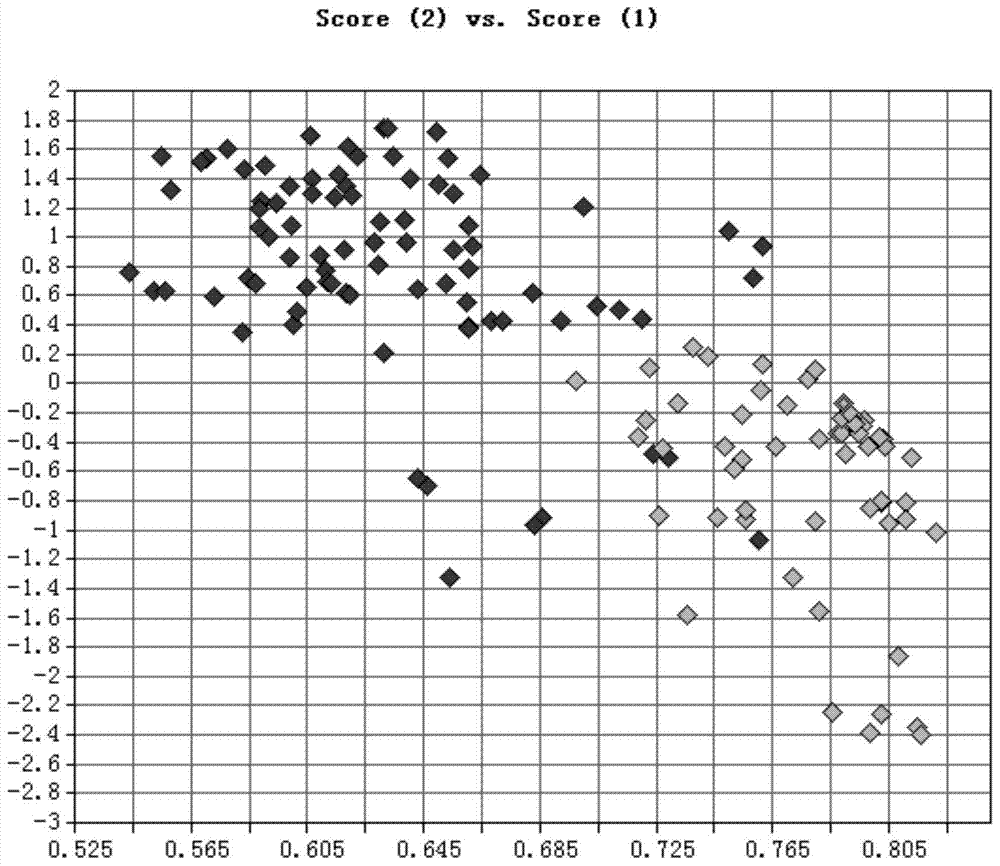A method for screening pse meat based on near-infrared spectroscopy
A technology of near-infrared spectroscopy and near-infrared spectroscopy, which is applied in the field of food technology research, can solve the problems of insignificant identification, long reading time of pH meter, unsuitable for online use in slaughterhouses, etc.
- Summary
- Abstract
- Description
- Claims
- Application Information
AI Technical Summary
Problems solved by technology
Method used
Image
Examples
Embodiment 1
[0063] (1) Establish a qualitative analysis model of PSE meat based on near-infrared spectroscopy:
[0064] For sample collection, the second half of the longissimus dorsi muscle of pigs slaughtered on the slaughtering line was taken, and the pH was tested 45 minutes after slaughter, and the samples were divided into two groups according to the pH. Group 1: pH 45min The samples with pH 6.0 is the sample with normal pH drop, which is the normal pork group . A total of 53 pig longissimus dorsi samples were collected. The first group: PSE meat sample group has 19 samples, the second group: normal meat sample group has 34 samples.
[0065] The collected longissimus dorsi was transported back to the laboratory, and the near-infrared spectrum of each sample was collected 3 hours after slaughter with a Bruker Vector 22 / N near-infrared spectrometer. The entire light source is covered. The spectral acquisition parameters are set as: sampling mode: diffuse reflectance of integrati...
PUM
 Login to View More
Login to View More Abstract
Description
Claims
Application Information
 Login to View More
Login to View More - R&D
- Intellectual Property
- Life Sciences
- Materials
- Tech Scout
- Unparalleled Data Quality
- Higher Quality Content
- 60% Fewer Hallucinations
Browse by: Latest US Patents, China's latest patents, Technical Efficacy Thesaurus, Application Domain, Technology Topic, Popular Technical Reports.
© 2025 PatSnap. All rights reserved.Legal|Privacy policy|Modern Slavery Act Transparency Statement|Sitemap|About US| Contact US: help@patsnap.com



